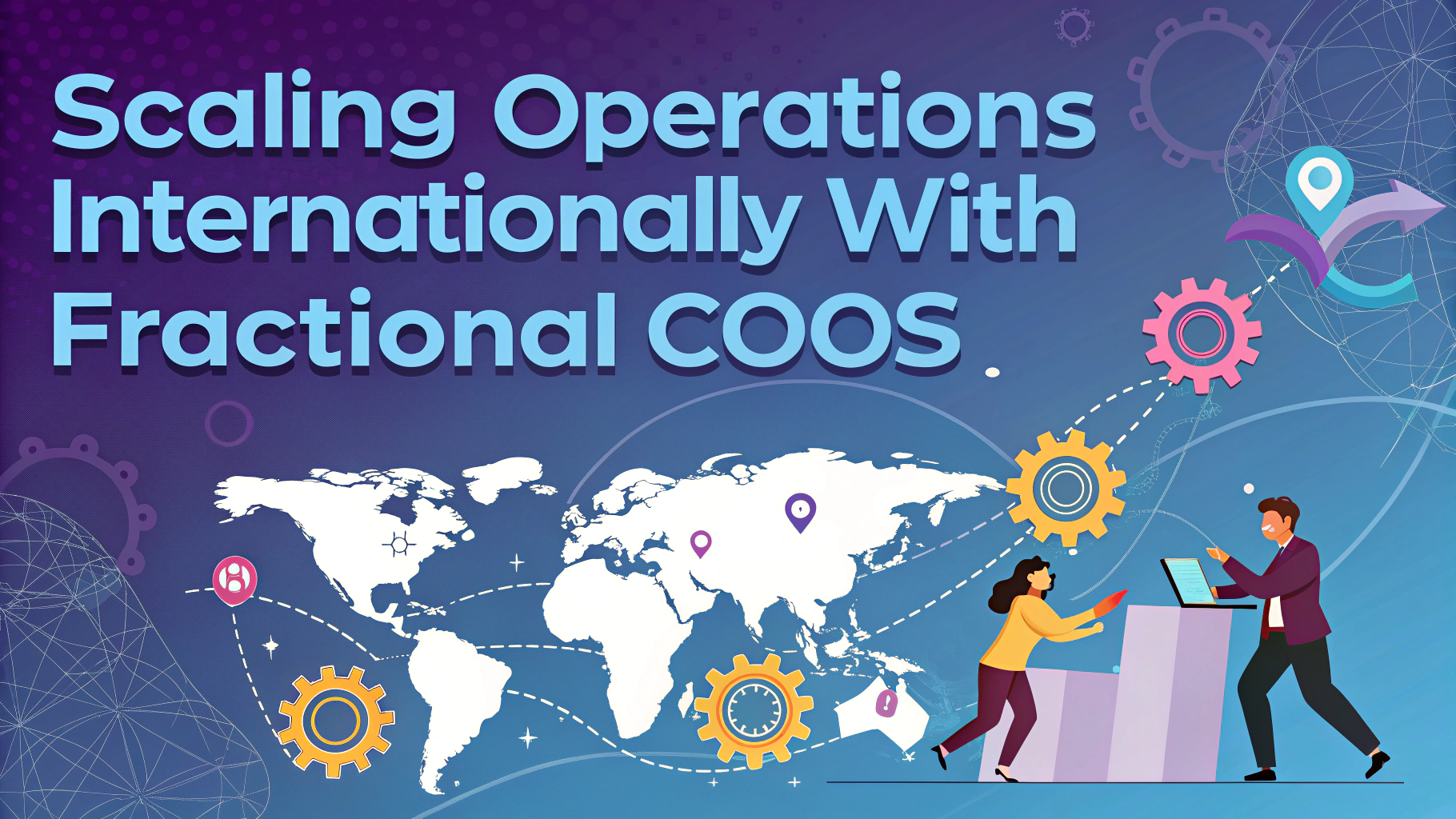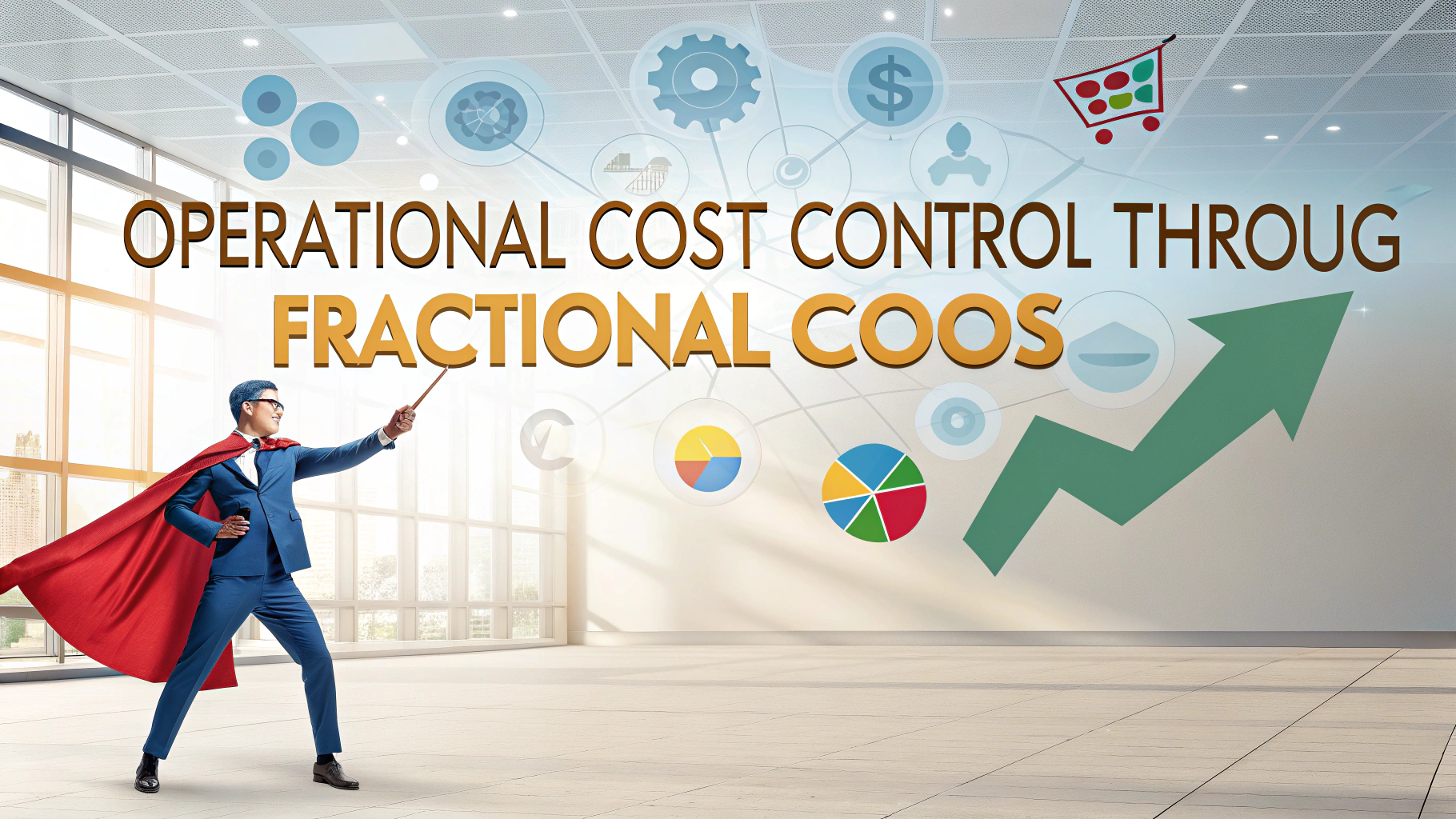Fractional leadership models represent a flexible approach where experienced executives share their expertise across multiple organizations on a part-time basis.
Small and medium businesses can now access C-level talent without the overhead of full-time executive salaries through fractional leadership arrangements.
This guide examines how fractional COO services are transforming business operations and delivering enterprise-level expertise to growing companies.
What is a Fractional COO?
A fractional COO (Chief Operating Officer) works with multiple companies simultaneously, typically dedicating 10-20 hours per week to each organization.
- Provides strategic operational leadership
- Implements systems and processes
- Manages key performance indicators
- Oversees day-to-day operations
- Develops and executes growth strategies
Benefits of the Fractional COO Model
Companies can access senior executive expertise at a fraction of the cost of a full-time COO.
- Reduced overhead costs
- Flexible engagement terms
- Immediate impact from experienced leadership
- Fresh perspective from cross-industry experience
- Scalable support that grows with your business
When to Consider a Fractional COO
- Revenue between $1M – $50M
- Experiencing rapid growth
- Need for operational optimization
- Preparing for funding rounds
- Planning strategic expansion
Implementation Strategy
- Assessment Phase
- Review current operations
- Identify key challenges
- Set clear objectives
- Integration Process
- Define scope of work
- Establish communication protocols
- Set performance metrics
- Execution
- Implement operational improvements
- Monitor progress
- Adjust strategies as needed
Cost Structure
| Engagement Level | Hours per Week | Monthly Investment |
|---|---|---|
| Basic | 8-10 | $3,000-5,000 |
| Standard | 15-20 | $5,000-8,000 |
| Premium | 25-30 | $8,000-12,000 |
Finding the Right Fractional COO
- Check professional networks (LinkedIn, COO Alliance)
- Review industry experience
- Examine track record of success
- Verify references
- Assess cultural fit
Measuring Success
Track these key performance indicators (KPIs) to evaluate your fractional COO’s impact:
- Operational efficiency improvements
- Cost reduction metrics
- Process optimization results
- Team productivity gains
- Revenue growth attribution
Next Steps for Implementation
Contact professional organizations like the COO Alliance (cooalliance.com) or Fractional Leadership Network (fractionalleadership.org) to begin your search for qualified candidates.
Schedule discovery calls with potential fractional COOs to discuss your specific business needs and objectives.
Request proposals that outline scope, deliverables, and expected outcomes before making your final selection.
Common Implementation Challenges
- Team resistance to change
- Communication barriers
- Role clarity issues
- Integration with existing leadership
- Managing remote relationships
Overcoming Challenges
Address potential obstacles through:
- Clear communication plans
- Detailed onboarding processes
- Regular stakeholder updates
- Defined decision-making protocols
- Structured feedback mechanisms
Technology Integration
Successful fractional COO engagements leverage these tools:
- Project management platforms
- Virtual collaboration software
- Data analytics dashboards
- Communication systems
- Performance tracking tools
Legal Considerations
- Confidentiality agreements
- Scope of work contracts
- Intellectual property protection
- Non-compete clauses
- Liability insurance requirements
Maximizing Your Fractional Leadership Investment
To ensure optimal returns from your fractional COO engagement:
- Set clear expectations and milestones
- Maintain consistent communication channels
- Provide necessary access to resources and information
- Foster integration with existing team members
- Regularly review and adjust strategic objectives
Transforming Operations Through Strategic Leadership
The fractional COO model represents a powerful solution for growing businesses seeking operational excellence. By carefully selecting and implementing this flexible leadership approach, companies can achieve significant operational improvements while maintaining cost efficiency.
Success in fractional leadership arrangements depends on clear communication, proper integration, and commitment to established objectives. When executed effectively, this model provides a scalable pathway to operational excellence and sustainable growth.
FAQs
- What is a fractional COO and how does it differ from a traditional COO?
A fractional COO is a part-time executive who provides operational leadership to multiple organizations simultaneously, typically working a predetermined number of hours per month. Unlike a traditional COO who works full-time for one company, fractional COOs share their expertise across several businesses. - What are the cost benefits of hiring a fractional COO?
Companies can access C-level operational expertise at 30-50% of the cost of a full-time COO, avoiding expenses like benefits, bonuses, and equity compensation while still receiving strategic operational leadership. - Which types of companies benefit most from fractional COO services?
Small to medium-sized businesses, startups, scale-ups, and companies in transition phases benefit most from fractional COO services, particularly those with revenues between $1-20 million that need operational expertise but cannot justify a full-time executive. - How many hours per month does a typical fractional COO work with each company?
Fractional COOs typically work 20-60 hours per month per company, depending on the organization’s needs, size, and specific operational challenges. - What are the primary responsibilities of a fractional COO?
Key responsibilities include optimizing operations, developing systems and processes, managing teams, implementing technology solutions, creating scalable infrastructure, and executing strategic initiatives. - How long do fractional COO engagements typically last?
Engagements commonly range from 6-18 months, though some relationships may extend longer based on the company’s growth trajectory and ongoing operational needs. - What qualifications should companies look for in a fractional COO?
Look for candidates with 15+ years of operational experience, proven track record in scaling businesses, strong leadership skills, industry expertise, and experience working in fractional roles across multiple organizations. - How does a fractional COO integrate with existing leadership teams?
Fractional COOs work closely with CEOs and leadership teams, attending key meetings, participating in strategic planning, and maintaining regular communication through virtual and in-person interactions while respecting existing company culture and dynamics. - What metrics are used to measure a fractional COO’s success?
Success metrics include operational efficiency improvements, cost reductions, process optimization results, team performance enhancement, successful project implementations, and achievement of specific KPIs established at the beginning of the engagement. - Can a fractional COO transition to a full-time role if needed?
Yes, many fractional COO arrangements include provisions for transition to full-time roles if both parties agree, typically after proving value and cultural fit during the fractional period.






